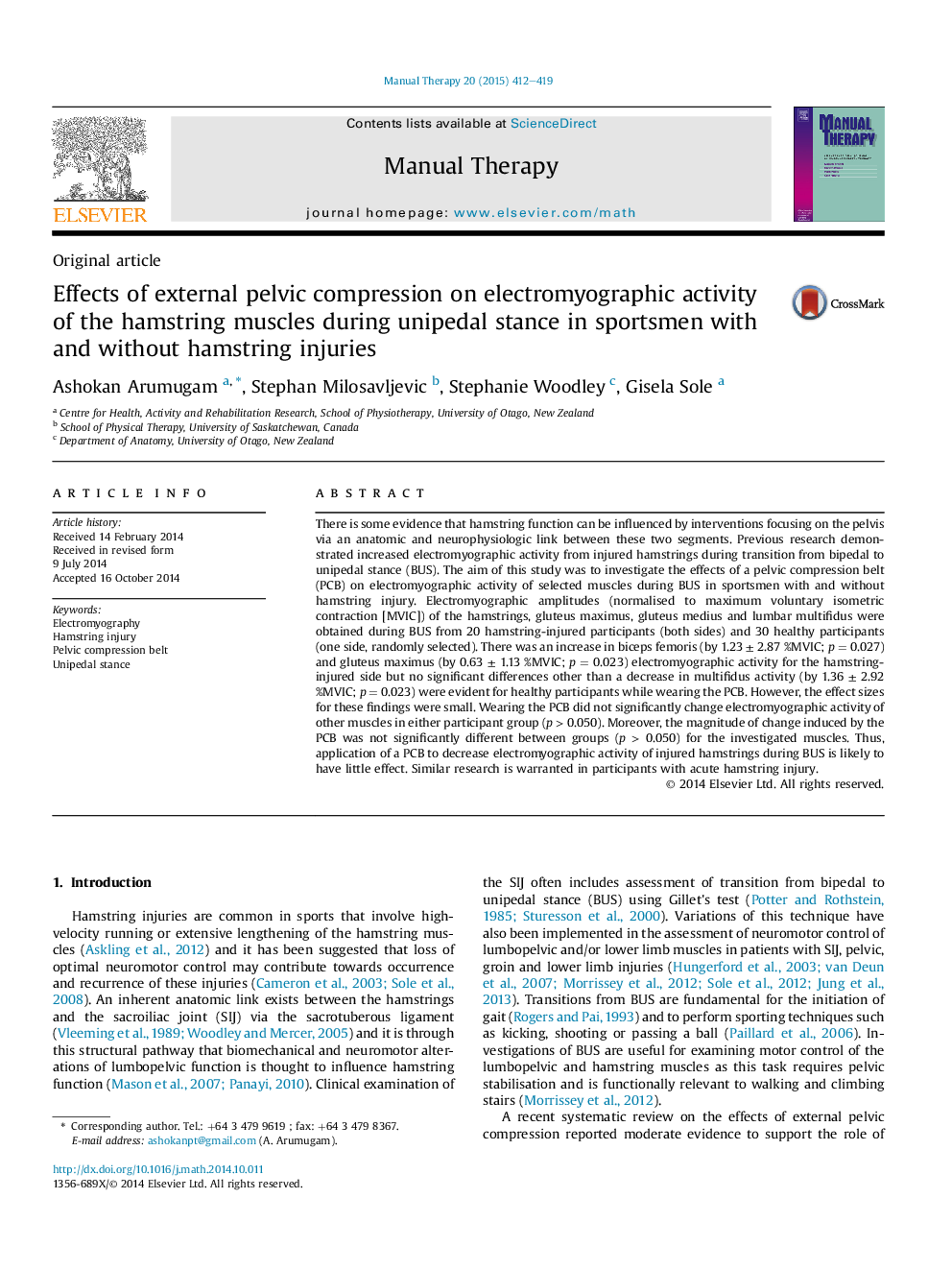| Article ID | Journal | Published Year | Pages | File Type |
|---|---|---|---|---|
| 5864884 | Manual Therapy | 2015 | 8 Pages |
There is some evidence that hamstring function can be influenced by interventions focusing on the pelvis via an anatomic and neurophysiologic link between these two segments. Previous research demonstrated increased electromyographic activity from injured hamstrings during transition from bipedal to unipedal stance (BUS). The aim of this study was to investigate the effects of a pelvic compression belt (PCB) on electromyographic activity of selected muscles during BUS in sportsmen with and without hamstring injury. Electromyographic amplitudes (normalised to maximum voluntary isometric contraction [MVIC]) of the hamstrings, gluteus maximus, gluteus medius and lumbar multifidus were obtained during BUS from 20 hamstring-injured participants (both sides) and 30 healthy participants (one side, randomly selected). There was an increase in biceps femoris (by 1.23 ± 2.87 %MVIC; p = 0.027) and gluteus maximus (by 0.63 ± 1.13 %MVIC; p = 0.023) electromyographic activity for the hamstring-injured side but no significant differences other than a decrease in multifidus activity (by 1.36 ± 2.92 %MVIC; p = 0.023) were evident for healthy participants while wearing the PCB. However, the effect sizes for these findings were small. Wearing the PCB did not significantly change electromyographic activity of other muscles in either participant group (p > 0.050). Moreover, the magnitude of change induced by the PCB was not significantly different between groups (p > 0.050) for the investigated muscles. Thus, application of a PCB to decrease electromyographic activity of injured hamstrings during BUS is likely to have little effect. Similar research is warranted in participants with acute hamstring injury.
